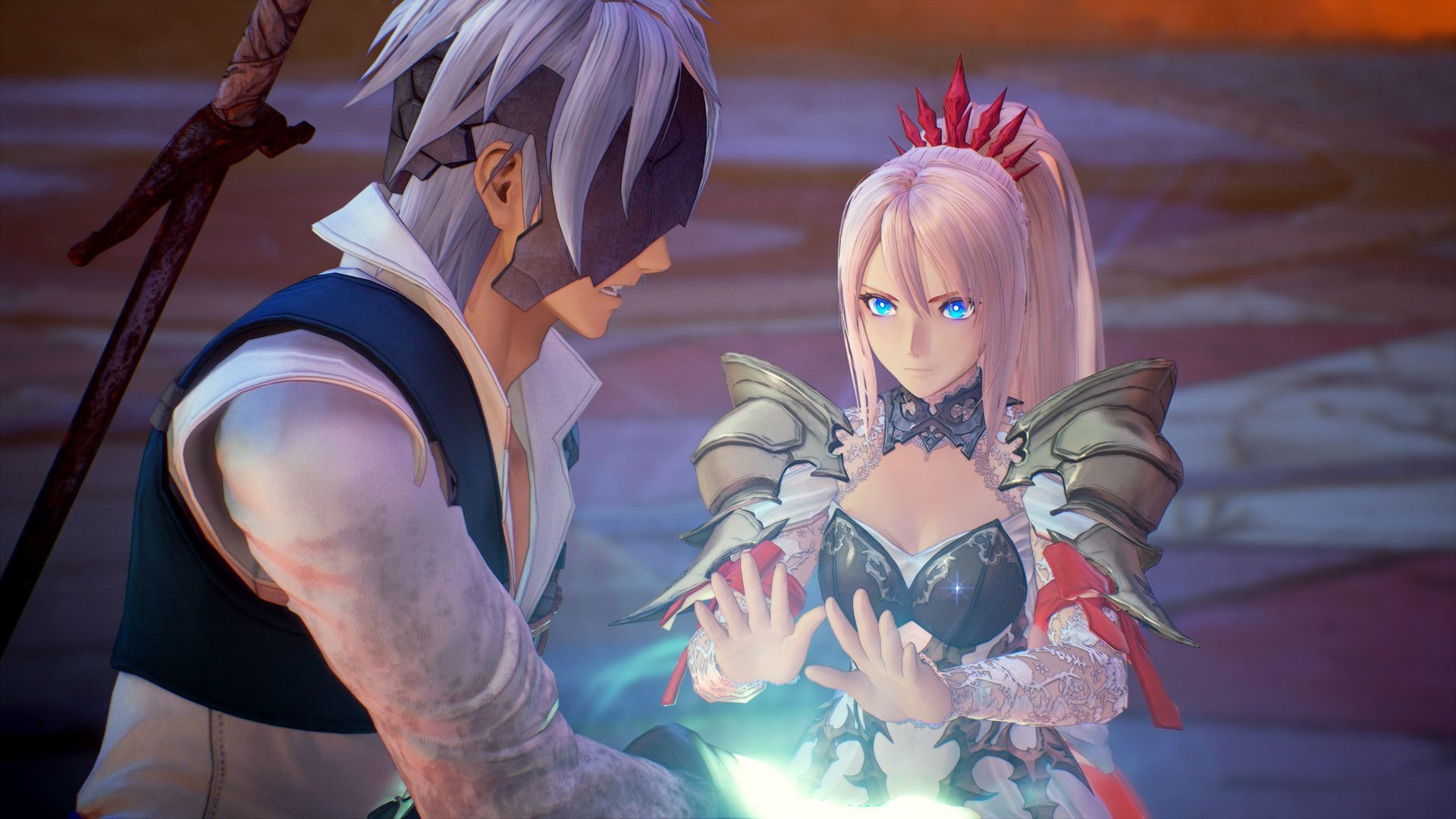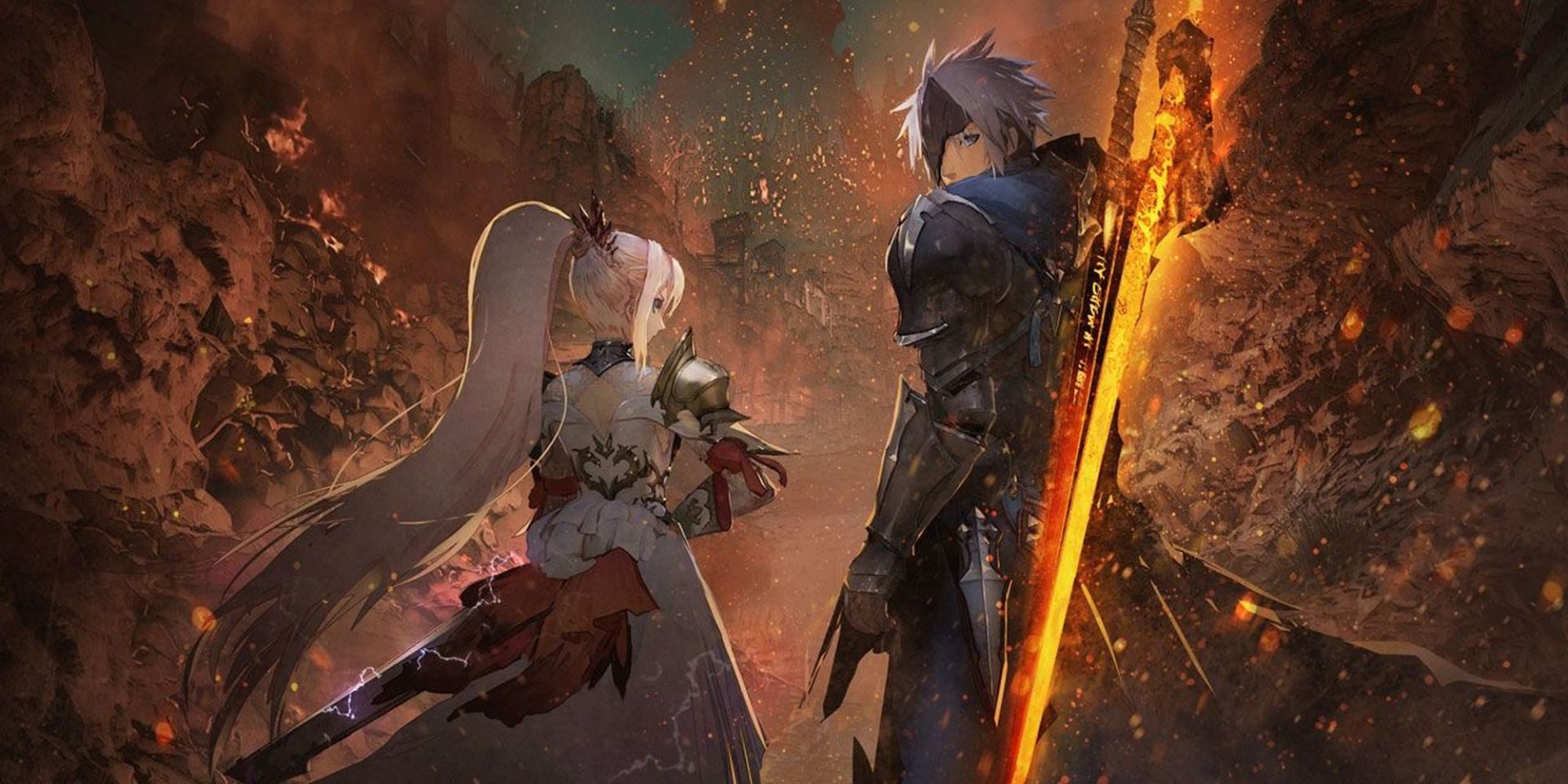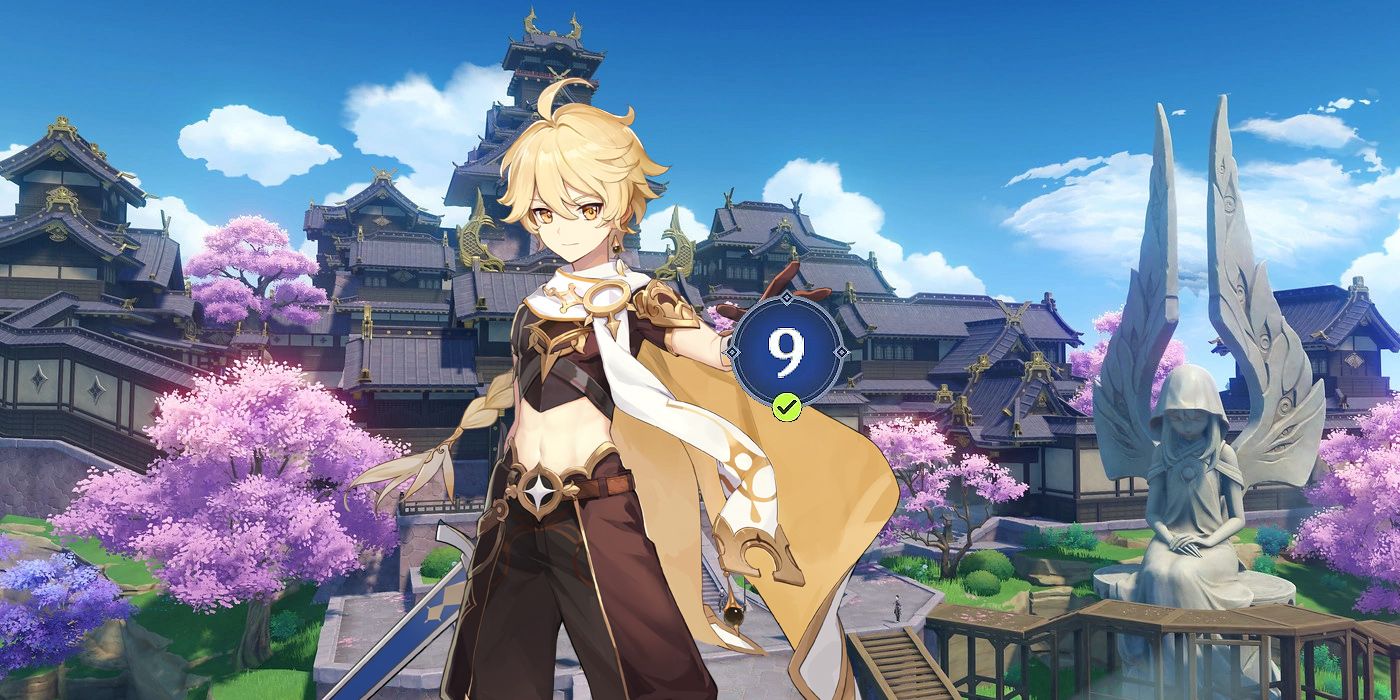Tales of Arise is being presented as a new beginning for the beloved JRPG series, a way to attract newcomers while simultaneously reinventing the established formula for hardened veterans. It’s not an easy balance to strike, and that’s a reality series’ producer Yusuke Tomizawa is keenly aware of. “There was a time where we were quite negative and didn’t believe that JRPGs would appeal to people overseas,” Tomizawa-san tells me. “But now everyone is pretty positive about it. This really hit home for us a few years ago when [Tales] released on Steam and we saw so many users playing and we were starting to receive direct feedback from fans. It helped up broaden our scope in terms of localization, and it made Bandai Namco realise that Tales is a series that deserves to be shared with the world.”
Tomizawa-san describes Tales of Arise as an “entry level title for people coming to the series for the first time” while also acknowledging it has a responsibility to reboot the series while ensuring it doesn’t stray too far from its cutesy anime roots. “There’s a lot of changes, and the fact we’re launching simultaneously around the world means we wanted to evolve the game into something everyone can enjoy,” Tomizawa-san explains. “The theme of our development was inheritance and evolution, so making sure we inherited all of the good stuff from the series thus far, while also evolving it for the modern day.”
Related: Aloy's Lack Of A Constellation In Genshin Impact Is A Massive Shame
Such evolution transfers over to all aspects of the game, whether it be combat, characters, or the narrative. Tales of Arise feels like Bandai Namco making a comprehensive effort to move things forward, while remaining attached to the past only in ways that preserve the series’ wider identity. As for the combat, it now feels more akin to something like Kingdom Hearts or Final Fantasy 15, where skills and real-time encounters are prioritised ahead of keeping your eye on gauges instead of the enemies charging toward you. “The action and how intuitive and exhilarating it feels is a big part of appealing to a broader audience,” Tomizawa-san says. “In the past, action and battles have been an important part of the franchise, but they’ve always operated on an RPG base with action added on. We’ve developed Tales of Arise from the ground-up as an action game. You mentioned dodging, which is a really good example. In the past when you were facing up to an opponent, you would have to keep an eye on gauges, but now it’s more about judging what the enemy is going to do and how you’re going to react and making that choice in the moment.” It’s the Dark Souls of Tales games, you heard it here first.

Speaking of Dark Souls, Tales of Arise is a notably darker take on the series, taking cues from the likes of Code Vein and Scarlet Nexus to craft a fantasy world that feels more mature and introspective, with the team hoping the property can mature as it reaches out to new audiences. “It’s about bringing the titles in line with a new generation of consoles,” Tomizawa-san says of this new visual direction. “How you express the characters and such a level of detailed 3D modelling involved brought with it a series of challenges. Having said that, the Tales series has always had a unique charm to it, and that was something we wanted to retain and didn’t want to lose.”
This change in direction hasn’t been received without criticism though, with Western fans decrying the promotional materials and box art for the game that seemed to abandon the aforementioned charm in favour of an edgy, more gothic aesthetic. When I asked Tomizawa-san about this direction, he chalked it down to international marketing departments deciding what would and wouldn’t appeal to certain territories. To him, the appeal of JRPGs remains the same whenever you are: “There are big differences like that, and I know there are some fans overseas who prefer the Japanese box art, but I don’t really think there is much of a difference between what fans want from an JRPG wherever they are in the world.”

As for the game’s narrative, the team has always pulled from real world issues, noting that they want to tell a story that is both fantastical and relevant to the modern day. “I think one starting point for coming up with new games is thinking about what’s happening today and what message we want to get across,” Tomizawa-san tells me. “We’ll work a story around that, a strong sense of a message that appeals to as many players as possible. In terms of character designs in Tales of Arise, we’ve not used stereotypes of this fantasy world, but types of characters the West will find quite familiar. For example, the character of Alphen is dressed in full armour, which is the first time we’ve ever featured a character like this.”
During our chat, the idea of this profoundly Japanese property appealing to the western market is brought up again and again, with Tales making a concerted effort to leave its roots behind and strive for something that isn’t as solitary anymore. However, unlike in decades past, this mission to reach a new audience hasn’t resulted in the franchise forsaking its own identity. Much like Yakuza, Nier, and Final Fantasy – Bandai Namco is beginning to recognise that the Japanese aspects of its marque properties are the very reasons why western fans are so enthralled by them. LGBTQ+ characters are often seen as a Western influence bleeding into Japanese titles, with Tales of Berseria especially attracting attention due to the relationship between characters like Velvet and Eleanor. When asked about fans perceiving such bonds as romantic, Tomizawa-san welcomed it.

“I can’t comment on the [queer] themes of Berseria, but the Tales series has always featured parties of male characters, female characters, and the relationships between them are really important, “Tomizawa-san says. “Whether you think of those relationships as friendship or romance is completely up to you, but I’ve always thought of the Tales series as very non-discriminatory. In terms of whether those queer themes are in Tales of Arise, I think I’ll leave it for people to play and make up their own minds.”
Reaching out to the West makes itself known once again with Bandai Namco’s recent collaboration with Takanashi Kiari, a VTuber belonging to Hololive English, a brand of virtual idols who are incredibly popular online for playing games, interacting with fellow members, and even releasing a handful of bangers. They’re slowly taking over the internet, both in Japan and the rest of the world, so Kiara was brought on to act as English Ambassador for Tales of Arise. “In Japan I can communicate directly with people, but in Japanese, of course,” Tomizawa-san explains. “So we’ve used Kiara-san, who loves the franchise, and she has a big audience and can communicate with a lot of people while bringing new people to the game. I think it was a really good idea since they create a really warm, welcoming environment for fans to communicate in and the reaction has been so positive.” The idea itself came from a US marketer, who foresaw the convergence of VTubers in the gaming space and how working with them on promotional campaigns was an easy win. Judging by all of the viewing figures – they were right.
Time will tell whether this drive to reach a wider, more diverse audience with Tales of Arise will pay off. From what I’ve played thus far it is almost certainly on the right track, and Tomizawa-san and company seem open to feedback and crafting this game into something that does the series justice while boldly pushing it forward.
Tales of Arise is coming to PS4, PS5, Xbox One, Xbox Series X/S, and PC on September 10.
Next: Fable's Queer Representation Is A Product Of Its Time




